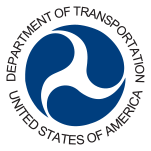Audit Reports
Financial Analysis of Transportation-Related Public Private Partnerships
Summary
On July 28, 2011 we issued a report on our financial analyses of transportation-related Public Private Partnerships (PPPs). Our objectives were to: (1) identify financial disadvantages to the public sector of PPP transactions compared to more traditional public financing methods; (2) identify factors that allow the public sector to derive financial value from PPP transactions; and (3) assess the extent to which PPPs can close the infrastructure funding gap.
We found that PPPs have several financial disadvantages when compared to traditional public sector financing, however, certain private sector efficiencies can meaningfully offset PPPs' cost disadvantages. PPPs have a higher cost of capital than traditional public financing, and they incur certain tax obligations that do not exist for public entities. Principal among private sector efficiencies that can offset cost disadvantages are those which lower new facility design and construction costs, as well as efficiencies in revenue generation. Innovative financing mechanisms, such as those provided under the Transportation Infrastructure Finance and Innovation Act (TIFIA) and the Department of Transportation's Private Activity Bonds (PABs), also may improve PPPs' financial attractiveness. In addition, we found that PPPs are not likely to significantly decrease the infrastructure funding gap because private sector investment in transportation through PPPs generally does not entail new or incremental funds. Ultimately, the difference in the relative values that PPP financing and conventional public financing can provide must be determined on a project-by-project basis after careful consideration of all factors, including those not incorporated into our analysis, such as the potential impacts of risk sharing arrangements or the ability of the private sector to deliver a project more expeditiously, which can be significant.
